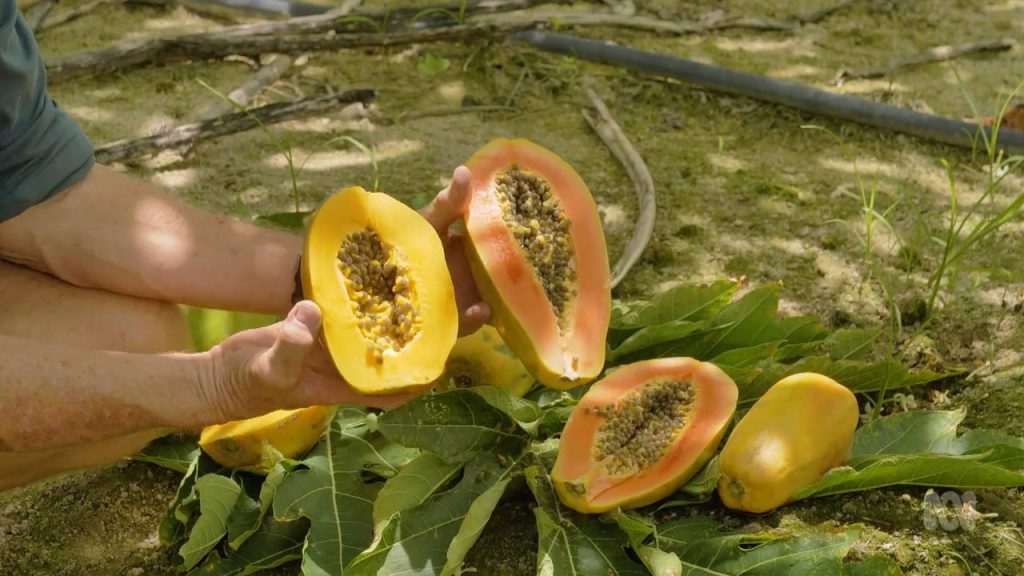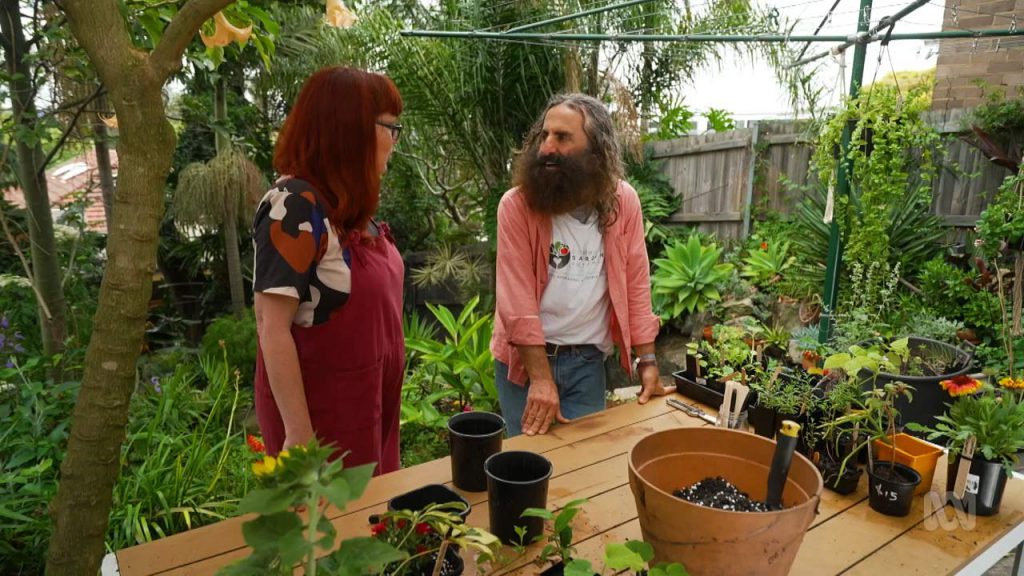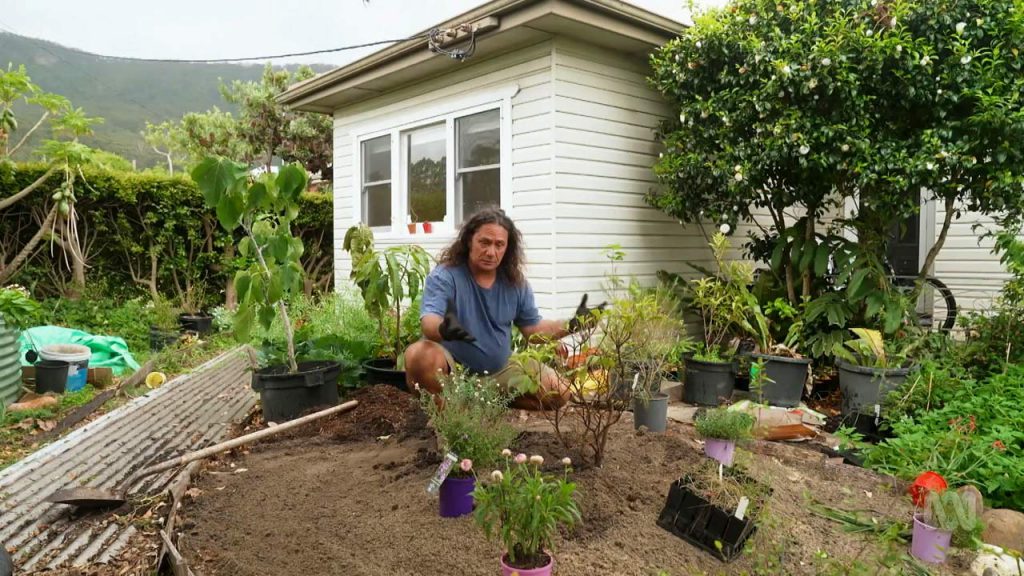Gardening Australia episode 4 2022: Costa Georgiadis visits a gardener’s native sanctuary, Jerry Coleby-Williams heads to a papaya farm in FNQ, Josh Byrne transitions from summer to winter crops, and Jane Edmanson visits a thriving community garden.
Inspiring, entertaining and full of practical advice, join Costa Georgiadis and the team as they unearth gardening ideas, meet avid gardeners and look at some of the most inspiring gardens from across the country.
Gardening Australia episode 4 2022
Creating the Country
Costa meets a passionate gardener who’s used native plants to build her own sanctuary over more than two decades. More than two decades ago, Cheree set out to transform an exposed sunny site on a corner block into not just a garden but her own sanctuary.
All she had in the ground was a large Norfolk Island Pine and a Scribbly Gum. “It was totally open to everything, no fencing, nothing,” Cheree says. Over the years, Cheree has used many plants local to her area, with “a few other things mixed in”.
This includes spectacular grass trees such as Xanthorrhoea glauca. “They’re actually our local species. “I put them in there 24 years ago,” she says. Xanthorrhoea need good drainage, so due to a “bog situation” in the front garden, Cheree had trucks bring in soil and she created mounds especially for the grass trees. Kangaroo Paws also appreciate the good drainage, and they’re thriving, providing the garden with incredible colour and texture, with both their flowers and leaves.
Found objects give the garden a country flavour. “I’d already collected a whole stack of stuff, you know, buckets, spades and ploughs,” Cheree says. “I wanted a windmill in the place, so I can really picture a different environment.”
FAQS – Rainwater | Quince | Allelopathy
Clarence explains why plants love the rain, Sophie has tips on eating flowering quince fruit, and Tino gives the low down on the term ‘allelopathy’.
Post Summer Prep and Plant
Josh shows us how to transition from summer to winter, by keeping the soil singing for delicious cool season edibles. It’s not just spring when you can plant crops – there’s plenty to plant over the cooler months – and in hotter climates this is often a better time when there is less heat stress on plants. To grow year-round crops for a family, you need to revitalise your soil and keep it healthy. Josh has been building the soil up for several years now, but he always puts some extra love into the beds before replanting.
Springvale Spirit – Gardening Australia episode 4 2022
Jane visits a thriving community garden to meet the keen crew keeping this patch pulsating with life – both the human and plant varieties. Gloria Gapper is the current president of the garden group. She says her friend Tina was a member first, and was worried the garden was becoming run-down about 10 years ago. The two of them set about fixing it together.
Slowly the membership built up again and now residents from many different backgrounds share the space and together make a strong, vibrant community. “We have members from Greece, Cambodia, Serbia, Vietnam – at one stage we had 11 diff nationalities,” Gloria says. Most are families “A new little member was born last week – we’ve seen kids grow up here.”
Member Susan Chen likes to visit in the mornings before going to her office job to get some physical work done before the mental exercise!
Off Grid Frog Hollow – Gardening Australia episode 4 2022
Tino heads down the road to meet a family living, and working, off the grid at their self-sufficient home and eco-aware nursery. Tino has found his forever home on the stunning Tasman Peninsula and has met another family nearby that have also fully embraced the beauty of the area and local community. Dave and Zoe Judge have achieved their dream of a self-sufficient lifestyle by growing their own food and generating their own power and water for the house and on-site nursery. “It’s really part of who we are and part of how we live… we get a lot of joy from the garden, we get a lot of food from the garden”, says Zoe.
Bank of the Future
Millie visits a small, low-tech native seedbank with big dreams of supplying local plant species to as many people as possible.
The Creswick Seedbank, now part of Seeding Victoria, was set up in 1994 and it supplies local seed for restoration works across Central, Western and Northern Victoria. “The idea of the seed bank was to ensure local seed is available for future use – usually for the next season – so the seed can be sown when and where it’s needed. Some plants only seed every few years, so it’s to save the glut and ensure supply for the lean years,” says Dan Frost, manager of the Ballarat Region Seed Bank.
There is an art to knowing when is the right time to collect seed, and ensuring seed is collected sustainably so that not too much is taken from the wild. The recommended limit is 20% of any given population. “Take any more and you deprive wildlife of food and the bush of its next generation,” Dan says.




